Collecting seeds from flowers: how and when to do it, including expert tips from Monty Don
Get free plants for your plot by collecting seeds from flowers. This is what you need to know

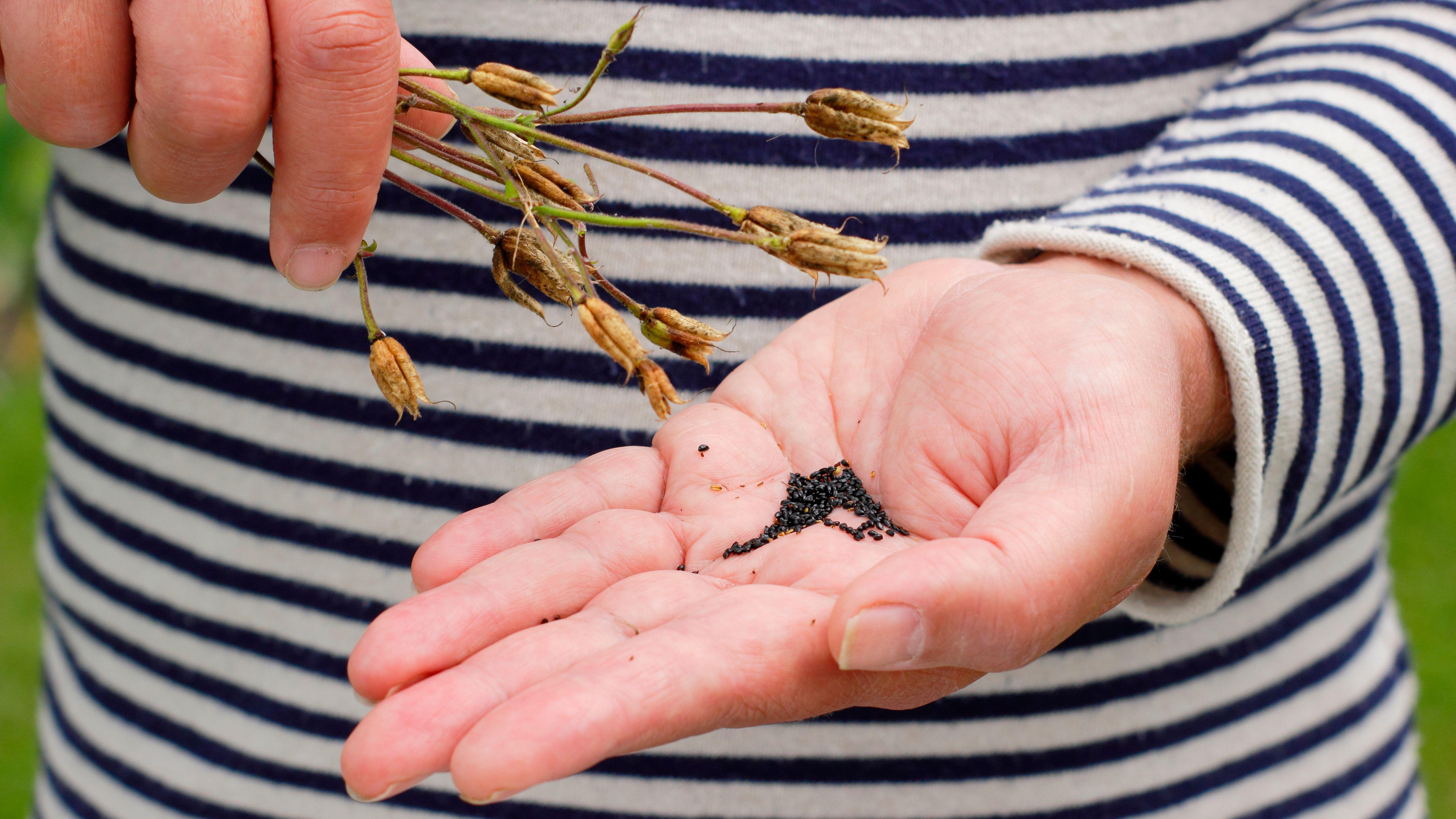
Make the most of your garden’s bounty by collecting seeds from flowers. It’s a super simple garden task and undertaking it means you will have new plants for the future which grow well in your plot without having to shop and pay for them.
There’s another reason you might want to get into the habit of collecting seeds. They’re ideal for swapping with gardening friends and family so you can share what you grow and receive the benefits of others’ cultivation.
Like the idea of being a seed collector? Once armed with the knowledge of how to grow flowers from seeds plus our guide, you’ll be ready to get started.
What are the benefits of collecting seeds from flowers?
If you're looking for free garden ideas, then getting new plants with no financial expenditure, and for very little effort, is number one on our list of the benefits of collecting seeds from flowers. The seeds will be useful for you in the future, or you can exchange them with a fellow gardener, or just give them away if you’re feeling benevolent.
The space you need for storing seeds is, of course, minimal, so even those with limited room for any garden storage ideas to stash them in can follow this money-saving strategy.

Which flowers can you collect seeds from?
You can collect seeds from many flowers in your garden borders. Annuals produce plentiful quantities of seed, but you could also collect it from biennials and perennials.
One important thing to bear in mind if you’re going to start, however, is that plants don’t always ‘come true’ from seed – that is, look like the parent plant. Seedlings from a hybrid produce highly variable results.
The takeaway? If you like the idea of collecting seeds, when you are buying seed packets to add new varieties of plants your flowerbed ideas, go for those identified as heirloom or heritage seeds, and avoid those with the label F1, which shows two different plants have been crossed to create a hybrid. 'If you
For optimum results from the seeds you collect, it’s also important to be selective about the individual plants in your backyard from which you harvest, going for the best. It’s the flowers that are the most vigorous and healthy that you should target.
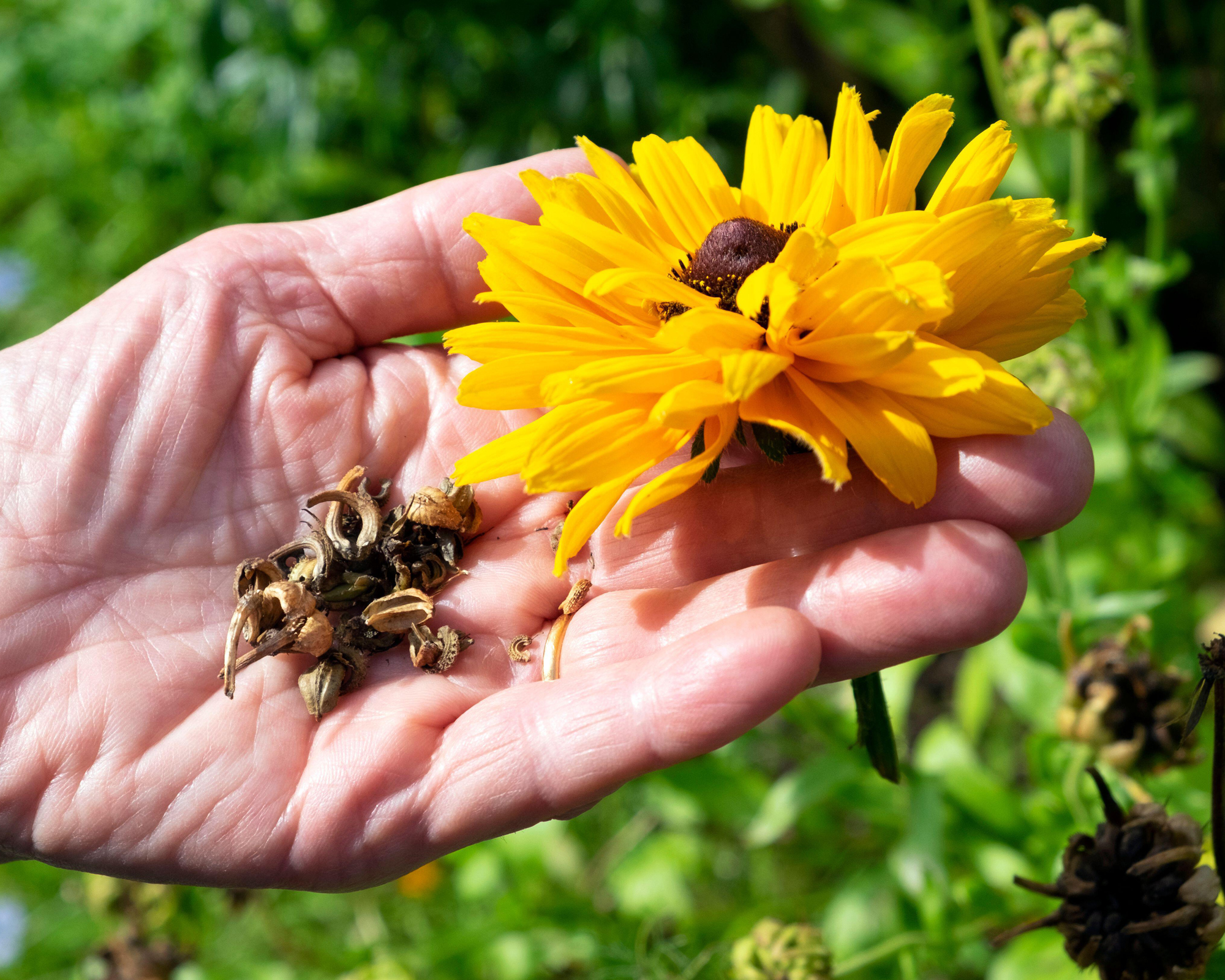
What’s the right time for collecting seeds from flowers?
You can collect ripe seeds from flowers during the growing season, but you’ll be busiest doing so in late summer and fall in the case of most annuals. Wait too long and the seeds will be dispersed naturally and therefore you will need to be vigilant so that you get the timing right once flowers start to die back. As a rough guide, seeds are ripe around two months after the plants have first flowered.
When you’re collecting seeds from flowers look for the seed heads to change from green to brown and split open easily. You can also feel a flower head gently with your hand and, if seed falls readily, you’ll know that it’s time for collection. If seeds are stored inside the seed head – think poppies, for example – you’ll be able to hear the rattle of the seeds and know you can collect them.
'Make sure you watch your flowers from day to day as they can ripen overnight and scatter their contents when your back is turned,' warns Ruth Hayes, gardening editor for Amateur Gardening.
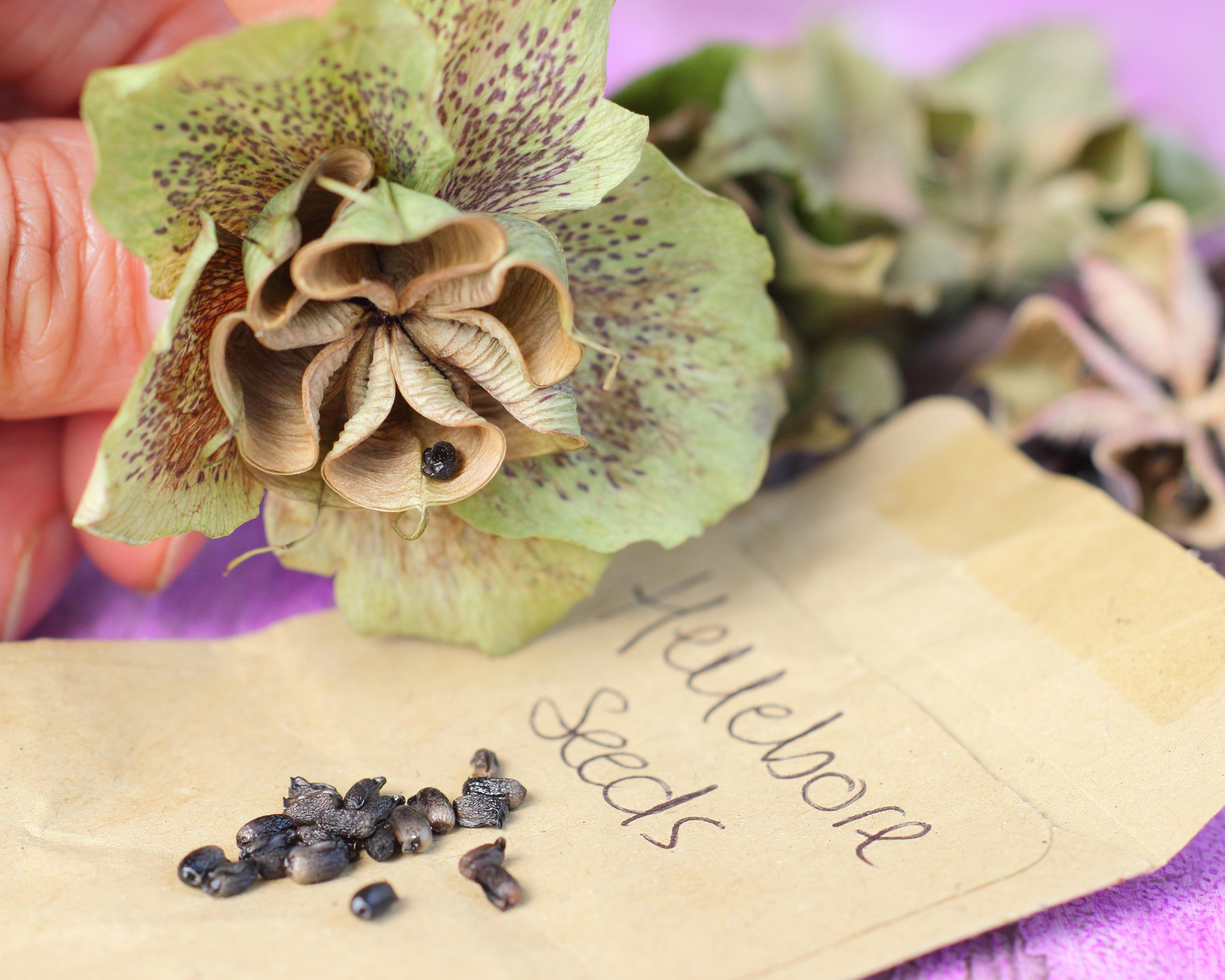
How to collect seeds from flowers
Collecting seeds from flowers is a really easy job. On his website, gardening expert, author and broadcaster Monty Don recommends getting yourself prepared with some brown paper envelopes of A5 size, that’s 5.8 by 8.3 inches, or 148 by 210mm. Bags are fine to use instead, but to avoid moisture, don’t use plastic versions and opt for paper. Here's how to do it:
- Wait for a dry – and preferably sunny – day for this job.
- After that all you need to do is carefully cut a seed head and upend it into an envelope, Monty advises. Alternatively, put the envelope over the seed head, seal it, then snip the stem off and store upside down, he says.
- Working with large flower spikes? Cut these off in sections rather than as one long spike.
- Remember that ‘carefully’ is key when you’re collecting seed to avoid scattering it on the ground rather than getting it into the envelope. Make sure your best secateurs or garden scissors are sharp and clean, too.
- Don’t forget to label each envelope and follow Monty’s lead by adding the date as well as the name of the plant, plus the position of the plant within the garden layout.
- Put the filled envelopes into a cool, dry place. Humidity and warmth can cause the seeds to deteriorate or even die.
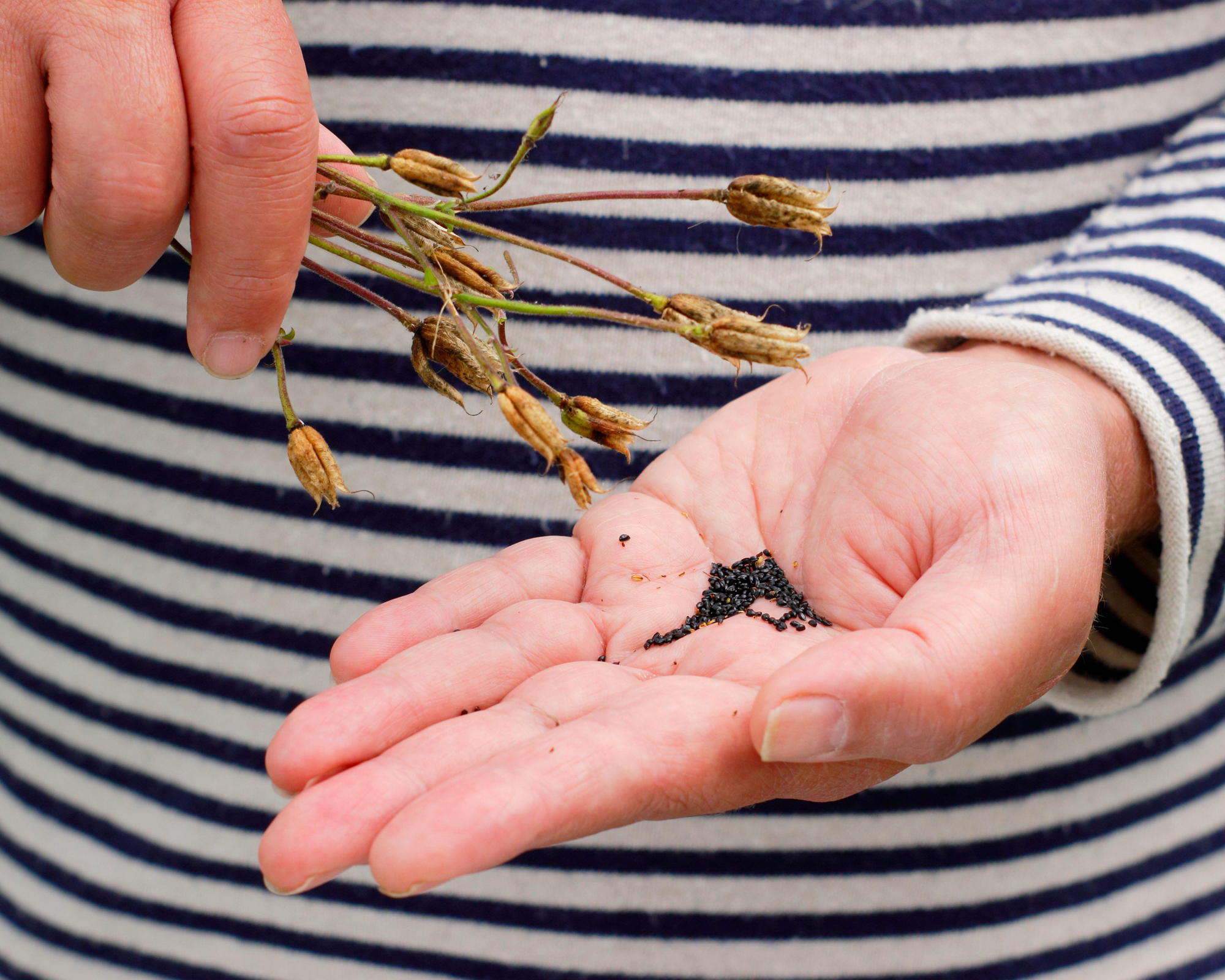
What are the best flowers to collect seeds from?
According to gardening expert Ruth Hayes of Amateur Gardening, the following options are really easy to grow and are good choices if you're interested in collecting seeds from flowers.
- Honesty Pink and white flowers give way to flat, penny-like seedheads that start out green and turn brown as they ripen. Cut them off and carefully peel the sides of the pods apart and remove the seeds.
- Aquilegia There are so many different colors and shapes of aquilegia, from delicate pinks and pale yellows to gaudy puces and deep purples. They cross-pollinate so you can create some wonderful different flowers.
- Sunflowers Who doesn't love these cheery tall sunflowers! The large seeds are held in the centre of the petals and can be shaken or stripped out when they brown and ripen. Garden birds love them too, so make sure you leave some seeds for them. There's more tips on how to grow sunflowers in our guide too.
- Campions Pink and white campion, plus night-scented catchfly all have large oval seedpods that are easy to empty by shaking into a container.
- Poppies Opium puppies and field poppies are easy to sow and grow and come in a dazzling array of colors, from pale mauve to vivid scarlet and a variety of shapes, some single-petalled, some flamboyant pom-poms. Our guide on how to grow poppies has more advice.
- Cerinthe major (honeywort) An unusual annual with grey-blue fleshy leaves and violet-blue, hanging bell-shaped flowers. Bees love these so they are a must for a wildlife garden and the seeds are large and pyramid-shaped, making them easy to collect.
- Nigella Love-in-the-mist are usually pale blue, though you can get varieties with flowers in pinks and purples. ‘Midnight’ is a deep blue Nigella that produces purple seedpods, making it ideal for indoor arrangements too.
- Foxgloves Tall foxgloves produce spires of flowers and, as a result, spires of seedheads. Harvest them as soon as they ripen or you’ll find seedlings popping up all over the garden!
- Woundwort A wild flower that looks stunning in borders, these produce lots of seeds on tall stems. They spread with a vengeance, so collect seeds as soon as they ripen.
- Hellebores Perennial Lenten roses are one of the first plants to flower in spring. They cross-pollinate readily to produce unusual hybrids and unlike most plants the seeds need sowing when fresh, so don’t bother saving them. They self-seed abundantly around the parent plant so you may prefer to wait until seedlings germinate and, when they are large enough, transplant them to the site of your choosing. You can find out how to grow hellebores in our practical guide.

How to store seeds collected from flowers
Followed Monty Don’s advice and put away the seeds you collected into a cool, dry place? Wait a couple of weeks and they should be dry, he says.
After that, Monty says they can be sieved, cleaned and stored in sealed packets. Need to put the seeds away for a while? Monty recommends putting them into a plastic tub that has a tight lid, then putting them into the refrigerator.
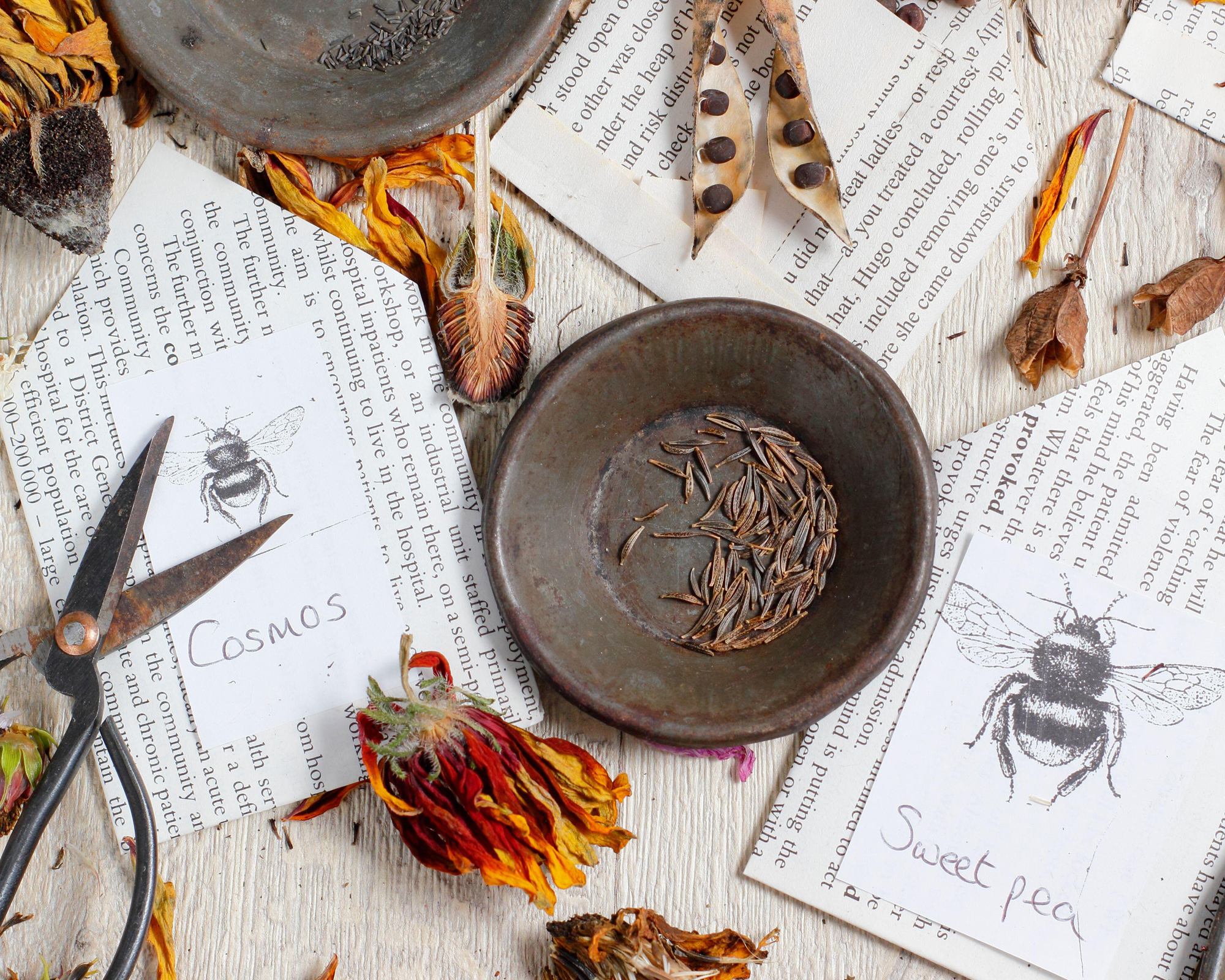

Sarah is a freelance journalist and editor writing for websites, national newspapers, and magazines. She’s spent most of her journalistic career specialising in homes and gardens and loves investigating the benefits, costs and practicalities of home improvement. It's no big surprise that she likes to put what she writes about into practice, and is a serial house revamper.
